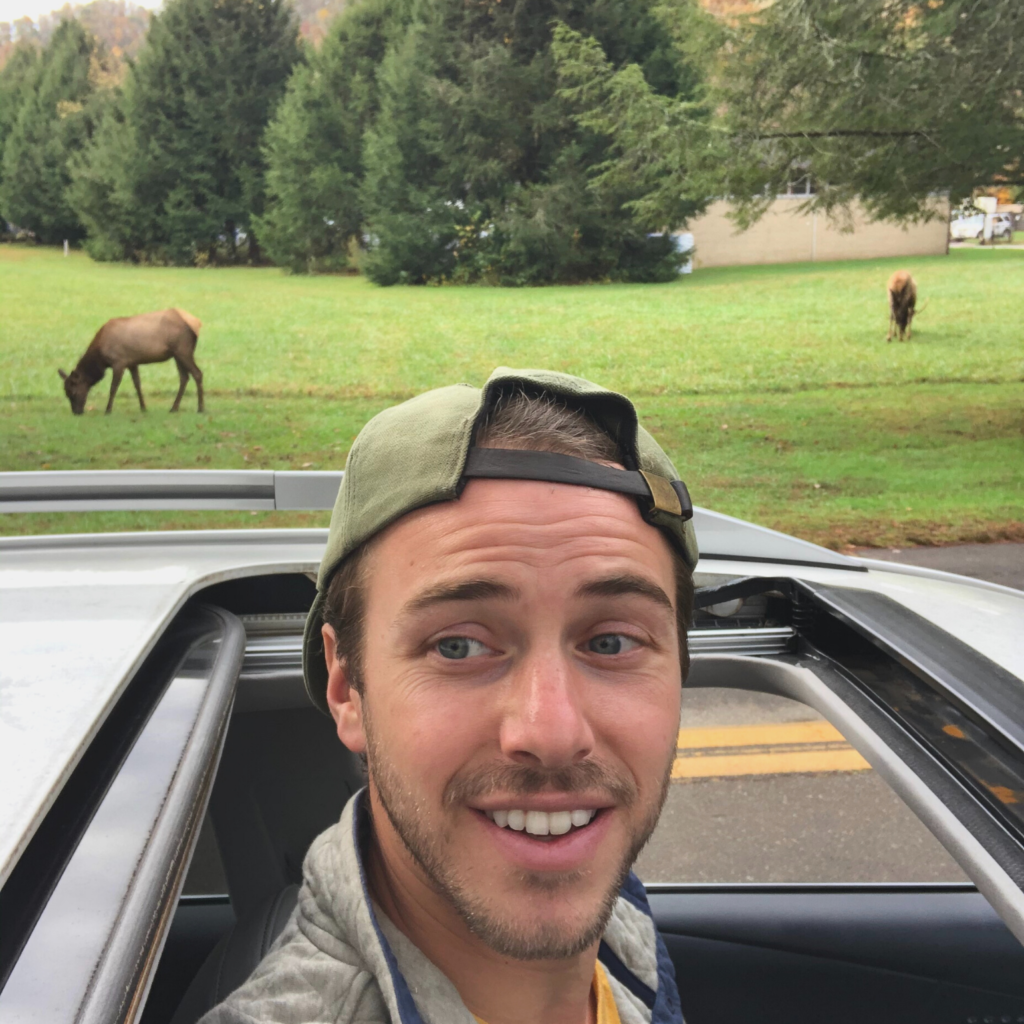I can remember as a kid riding with my dad for hours looking for wild elk. We put hundreds of miles on the family car as we cruised northern Minnesota. During dad’s yearly hunting trip with his brothers and my cousins, I would tag along with the hope of seeing Northwoods wildlife. Of course, instead of hunting, I would carry my little point and shoot camera ready for any rustle in the brush. Each year I was determined to see mammals like black bears, wolves, moose, or even elk. I especially wanted a glimpse of a wild elk, since they were such a rare sight in Minnesota following their reintroduction to the state. Over the years it seemed like we had driven every dirt road in every county of the woods, but even with that dedication we never successfully spotted a wild Minnesota elk.

Those memories with my dad jumped right into my mind as my alarm went off at 4:30 am. That was my cue to start my own solo elk scouting adventure. Instead of Minnesota, I planned a 200-mile trek to The Great Smoky Mountain National Park in North Carolina. Like Minnesota, nearly 20 years ago the National Park Service began a five-year experimental program to reintroduce elk to the Great Smoky Mountains. Originally only 25 individuals were released, and later an additional 27 were added to the population. Now there are nearly 200 wild elk that call the Smoky Mountains home, a promising slice of the historic population that once roamed this wilderness.
Great Smoky Mountain National Park is an iconic destination for many. In fact, it is ranked as America’s most popular National Park. In 2019 alone they welcomed over 12 million visitors. Most of those nature seekers visit in September and October, making fall the park’s busiest season. This period also happens to be the best time of year to see elk. During rut, the bull elk are sporting their full antlers and are focused on challenging each other for dominance over territories and breeding females. Their goal is to prove their strength and vigor to the females and create their own harem. These unique behaviors cause quite the stir and attract a lot of attention from visitors.

Three Tips for Safely and Successfully Spotting Elk in the Smokies
Dawn or Dusk:
Like most wildlife, peak activity for elk is around sunrise and sunset. In fact, the park ranger I spoke with during my visit mentioned that the middle of the day is considered elk nap time. Personally, I would recommend getting to the park right around sunrise when the temperatures are still cool, and the lighting is perfect for photography. I can imagine dusk would offer successful sightings too, but I was worried the mountains would block most of the golden sunset light for photos. Plus getting to the park bright and early meant avoiding the fall traffic. The ranger was right, later in my visit after lunch, I got stuck in a line of cars that were piled up in both directions looking at resting elk. Every carload was rubbernecking to get a view of the herd as they napped through the heat of the day. Plan to beat the lineup and visit around dawn or dusk for sighting elk.

Location is Key:
Though these elk are free to roam the entire Smoky Mountains, they are almost exclusively found in the far eastern side of the park and its surrounding area. A quick google search will likely recommend viewing the elk herds from the Cataloochee Valley, about 20 miles north of Waynesville, NC. Originally my plan was to visit that area of the park, but I got a last-minute recommendation from a wildlife photographer I follow on Instagram (shout out @thegreatphoebo) to consider the Oconaluftee Visitor Center just outside of Cherokee, NC. So, I switched gears and my navigation was set for Oconaluftee. Adjacent to the parking lot from the visitor center is a lush meadow that elk are known to frequent. But when I arrived there were no elk to be seen. Instead, the meadow was completely empty, so I ventured down along the riverside hiking trail to see if I could observe some elk in the forest bordering the grassy field. The hike was gorgeous, and I loved hearing the water as my jaw dropped over the changing leaves, but still no elk. I jumped back in my car and drove just a little further into the park and turned down the Oconaluftee Residence Road also labeled “Job Corps Center.” Almost immediately I saw a group of elk grazing the lawns around the maintenance buildings. For the next three hours, I was content to just quietly poke my head out of the car and watch the peaceful herd.
I especially recommend checking out this area of the park since it’s off the main roadway. I was able to safely pull my car to the side of the road and snap countless photos of the elk, all while not having to worry about blocking traffic. From Oconaluftee Residence Road I was lucky enough to see dozens of adult females with their young calves that were not yet fully weaned, along with adolescent males just beginning to grow in their new antlers. I was especially impressed to see a very mature bull elk with his expansive antlers. Wildlife viewing can at times feel like a thankless activity. But patience is key, especially since there are only a couple hundred elk that live in the Smokies. If you are not having luck spotting any elk, I recommend swinging into the visitor center to talk with one of their rangers, they are the experts on the area. Also, pack binoculars so you can scan the edge of the fields for elk. During my visit, my car ended up getting surrounded by elk, and I was able to take great pictures even with my iPhone. Just remember that sometimes good things come to those who wait.

Be Respectful and Be Safe:
Always remember that elk are WILD animals, and they deserve respect and space. The National Parks Service recommends giving elk a distance of at least 50 yards. Do not approach elk, especially in the fall under any circumstance. Elk are very large and potentially very dangerous animals. My tip is to stay in your vehicle! Each of these pictures was taken safely from inside my car; I especially loved opening my sunroof and acting like I was on an elk safari. Just remember to give the elk plenty of room and be sure to not block their movements. For more information on keeping yourself and elk safe check out the Great Smoky Mountains National Park page.
My visit to the Great Smoky Mountains National Park was a success, and I highly recommend that you too make a journey for wildlife and go see the wild elk for yourself. I was glad to have rented a Sony 220-600mm lens to help capture the day. Having that massive zoom lens made photographing wildlife safe and successful as I kept my distance. I would recommend looking into renting camera equipment if you are looking to get that perfect wildlife shot.








